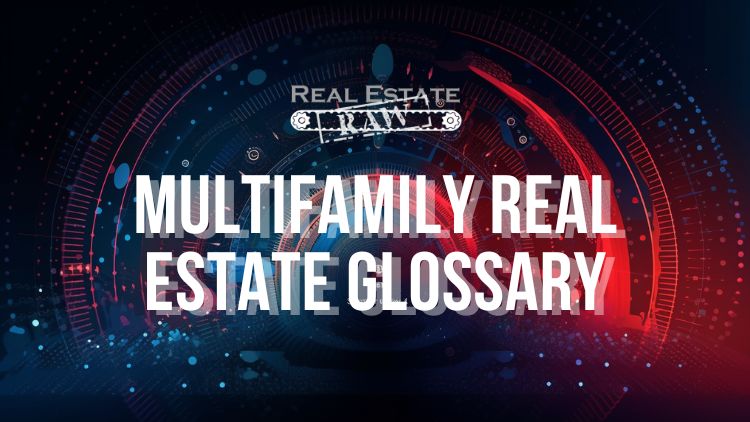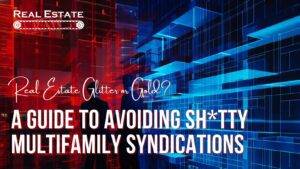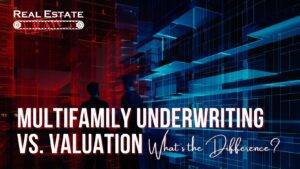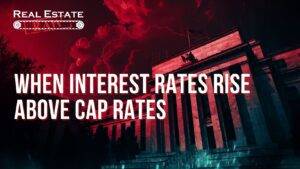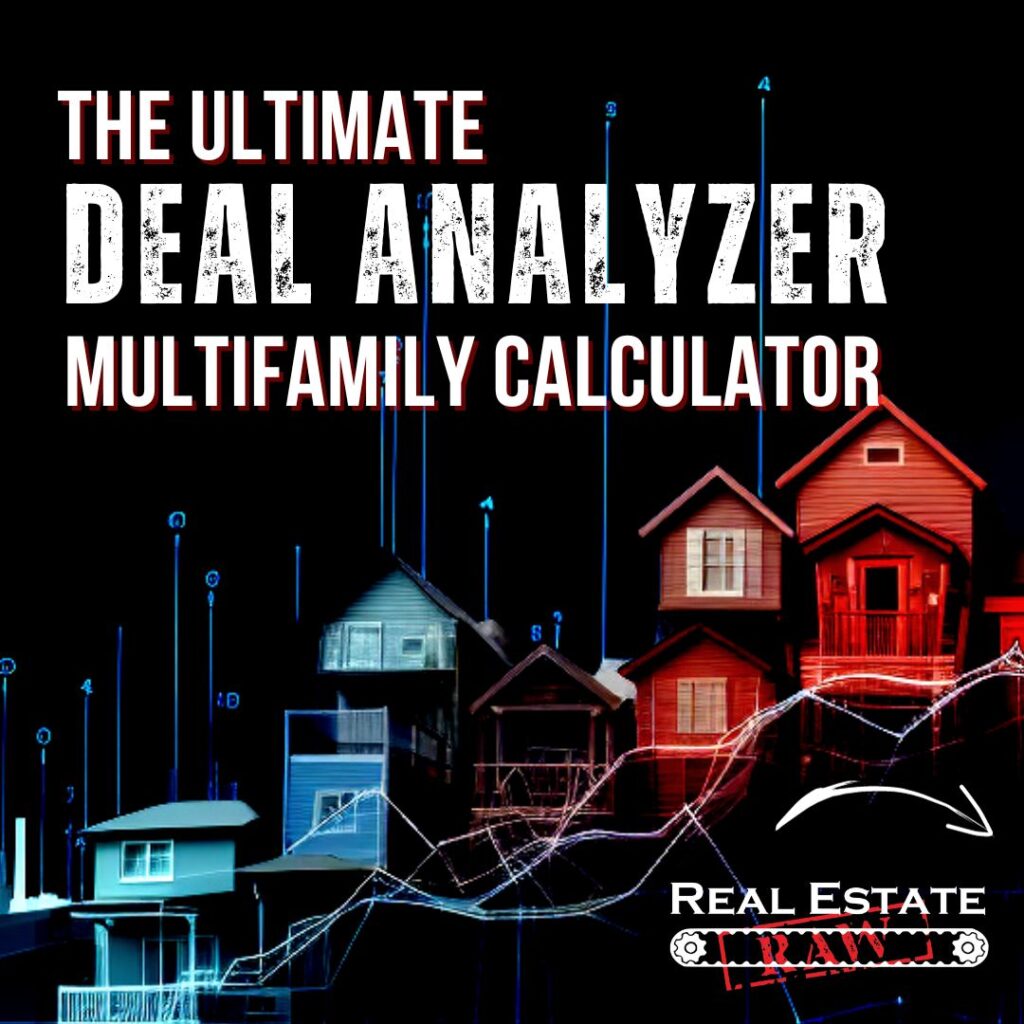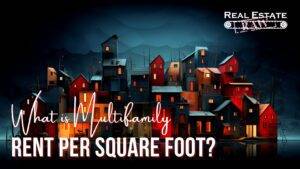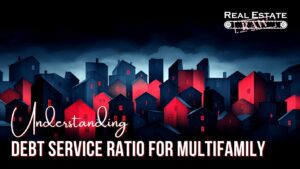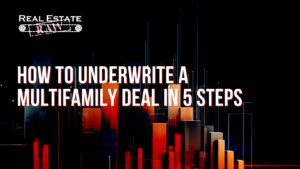- Acceleration Clause: A contractual provision in a loan agreement that grants the lender the right to demand immediate payment of the entire outstanding balance if the borrower fails to meet certain conditions or defaults on the loan.
- Adjustable-Rate Mortgage (ARM): A mortgage loan with an interest rate that can fluctuate periodically based on changes in a specified financial index, resulting in varying monthly mortgage payments for the borrower.
- Adjustment Date: The specified date in a loan agreement when the interest rate on an adjustable-rate mortgage (ARM) or other variable-rate loan will be adjusted based on changes in the applicable financial index.
- Amortization: The gradual repayment of a loan or debt over a specific period through regular installment payments, which include both principal and interest portions.
- Amortization Schedule: A table or spreadsheet that outlines the repayment plan for a loan, detailing the scheduled payments over the loan term, the allocation of each payment towards principal and interest, and the remaining loan balance after each payment.
- Annual Percentage Rate (APR): The total cost of borrowing, expressed as an annualized percentage rate, which includes the interest rate, certain fees, and other costs associated with obtaining the loan.
- Application: The initial step in the loan process where a borrower submits a formal request for a loan, providing personal and financial information to the lender for evaluation and consideration.
- Appraisal: An assessment or valuation of the fair market value of a property conducted by a qualified appraiser, typically performed to determine the property’s worth for mortgage financing or other purposes.
- Appraised Value: The estimated fair market value of a property as determined by a professional appraiser based on their evaluation and analysis of various factors such as comparable sales, property condition, location, and market conditions.
- Appraiser: A qualified professional who evaluates and determines the fair market value of a property through a comprehensive analysis of its physical characteristics, location, comparable sales, and other relevant factors.
- Appreciation: The increase in the value of a property over time due to various factors such as market conditions, improvements, or demand, resulting in a higher selling price than the initial purchase price.
- Assessed Value: The value assigned to a property by a government assessor for the purpose of calculating property taxes, which may not necessarily reflect the property’s fair market value.
- Assessment: The process of determining the value of a property for taxation purposes, which is typically conducted by a government authority to levy property taxes based on the assessed value.
- Assessor: An official or professional appointed by a government authority who assesses the value of properties for taxation purposes and determines the assessed value of each property within a given jurisdiction.
- Asset: Any property or resource with economic value that is owned by an individual, business, or organization, including real estate, investments, cash, equipment, or intellectual property.
- Assignment: The transfer of a legal right or interest in a property or contract from one party (assignor) to another party (assignee), typically through a written agreement or assignment document.
- Assumable Mortgage: A mortgage loan that can be transferred from the seller to the buyer of a property, allowing the buyer to assume responsibility for the existing mortgage terms and continue making payments.
- Assumption: The act of taking over or assuming an existing obligation or contract, such as assuming responsibility for an assumable mortgage by a new property owner.
- Balloon Mortgage: A type of mortgage loan that has a relatively short-term repayment schedule with fixed monthly payments for a specified period, followed by a large “balloon” payment of the remaining principal balance at the end of the loan term.
- Balloon Payment: A significant lump sum payment due at the end of a balloon mortgage or other similar loan, representing the remaining principal balance that must be paid in full to satisfy the loan obligation.
- Bankruptcy: A legal proceeding in which an individual or business declares their inability to repay their debts, resulting in the discharge or reorganization of debts under the supervision of a bankruptcy court.
- Bill of Sale: A legal document that serves as proof of the transfer of ownership or sale of personal property from one party to another, detailing the specific items, purchase price, and terms of the transaction.
- Bridge Loan: A short-term loan used to bridge a financial gap between the purchase of a new property and the sale of an existing one, providing temporary funds until the borrower secures long-term financing.
- Broker: An individual or firm acting as an intermediary between buyers and sellers in real estate transactions, facilitating the process and representing the interests of one or both parties for a fee or commission.
- Buydown: A financial arrangement in which a borrower pays additional upfront points or fees to reduce the interest rate and monthly mortgage payments for a certain period of time.
- Call Option: A contractual provision that grants the holder the right, but not the obligation, to purchase a property or financial instrument at a specified price within a specific period.
- (Rate) Cap: A provision in adjustable-rate mortgage (ARM) loans that limits the maximum increase in the interest rate or the maximum change in the monthly payment during a specified period.
- Cash-out Refinance: A refinancing transaction in which the borrower takes out a new mortgage loan that is larger than the remaining balance on the existing loan, allowing them to receive the difference in cash.
- Certificate of Deposit: A time deposit offered by financial institutions with a fixed term and a specified interest rate, providing a higher yield than a regular savings account in exchange for restricted access to funds.
- Certificate of Deposit Index: An index used to determine the interest rate for certain adjustable-rate mortgages (ARMs), with the rate being tied to the performance of a specified certificate of deposit.
- Certificate of Eligibility: A document issued by the Department of Veterans Affairs (VA) to eligible veterans, confirming their eligibility for a VA-guaranteed home loan.
- Certificate of Reasonable Value (CRV): A document issued by the Department of Veterans Affairs (VA) that establishes the maximum amount the VA is willing to guarantee for a specific property, based on an appraisal.
- Chain of Title: The sequence of historical ownership records, or transfers, for a property, establishing the current owner’s legal ownership and providing a clear record of property rights.
- Clear Title: A title to a property that is free from any legal claims, liens, or encumbrances, indicating the owner’s full and unencumbered ownership rights.
- Closing: The final stage in a real estate transaction when the buyer and seller complete the necessary legal and financial steps to transfer ownership of the property.
- Closing Costs: The fees and expenses incurred by the buyer and seller during a real estate transaction, including loan origination fees, title search fees, appraisal fees, attorney fees, and other miscellaneous costs.
- Closing Statement: A document that provides an itemized breakdown of all the financial transactions, including the purchase price, closing costs, and adjustments, that occur during a real estate closing.
- Cloud on Title: A claim, lien, or encumbrance on a property that may affect the owner’s clear title and create uncertainty or disputed ownership rights.
- Co-Borrower: An individual who shares the responsibility of repaying a loan with another borrower, typically appearing on the loan documents and having equal legal obligations for the debt.
- Collateral: An asset or property pledged as security for a loan, serving as a guarantee to the lender that they can recover their investment if the borrower defaults on the loan.
- Collection: The process of pursuing and obtaining payment on delinquent accounts or debts through various methods, such as contacting the debtor, sending notices, or engaging in legal actions.
- Commission: A fee or compensation paid to a real estate agent or broker for their services in facilitating a real estate transaction, typically calculated as a percentage of the sale price.
- Common Area Assessments: Fees charged to owners of properties in a common interest development, such as a condominium or planned unit development (PUD), to cover the costs of maintaining and operating shared/common areas.
- Common Areas: The shared spaces or facilities within a multi-unit property or community, such as lobbies, hallways, swimming pools, parking lots, or recreational areas, accessible to all property owners or residents.
- Common Law: The body of law derived from judicial decisions and precedents established by courts, rather than from statutes or legislation, that forms the basis of legal principles and rules in common law jurisdictions.
- Community Property: A legal concept in certain jurisdictions where property acquired by a married couple during the marriage is considered jointly owned, with each spouse having an equal interest in the property.
- Comparable Sales: Recent sales of similar properties in the same or similar location used to determine the market value of a property through a comparative analysis approach in an appraisal.
- Condominium: A type of real estate ownership where individuals own individual units or apartments within a larger complex or building, along with shared ownership of common areas and facilities.
- Condominium Conversion: The process of converting an existing rental property or building into individually owned condominium units, allowing tenants to purchase their units and become owners.
- Condominium Hotel: A combination of a condominium and a hotel, where individual units are owned by different owners but operated as a hotel, offering services and amenities to guests.
- Construction Loan: A short-term loan provided to finance the construction or development of a property, usually with the understanding that it will be replaced by long-term financing once the construction is complete.
- Contingency: A condition or requirement that must be met before a contract becomes binding or a transaction can proceed, such as obtaining financing, satisfactory property inspection, or resolution of certain issues.
- Contract: A legally binding agreement between two or more parties that outlines the rights, obligations, and terms of the parties involved in a transaction or relationship.
- Conventional Mortgage: A mortgage loan that is not insured or guaranteed by a government agency, such as Fannie Mae, Freddie Mac, or the Federal Housing Administration (FHA).
- Convertible ARM: An adjustable-rate mortgage (ARM) that allows the borrower to convert the loan to a fixed-rate mortgage during a specified conversion period, providing flexibility in the interest rate structure.
- Cooperative (Co-op): A type of housing ownership where individuals purchase shares in a cooperative corporation, which owns the entire property, and each shareholder has the right to occupy a specific unit.
- Cost of Funds Index (COFI): An index used to determine the interest rate for certain adjustable-rate mortgages (ARMs), with the rate being based on the cost of funds to the lender.
- Credit: The ability of an individual or business to borrow money or obtain goods or services with the expectation of future payment, based on their financial history, income, and creditworthiness.
- Credit History: A record of an individual’s past borrowing and repayment behavior, including information on loans, credit cards, payment history, and any outstanding debts, used by lenders to assess creditworthiness.
- Creditor: A person, organization, or financial institution that extends credit or provides funds to a borrower, with the expectation of being repaid the principal amount plus interest or other charges.
- Credit Report: A detailed document that provides information about an individual’s credit history, including their borrowing and repayment activities, public records, credit scores, and other relevant data.
- Credit Repository: An entity that collects and maintains credit information on individuals and businesses, such as credit bureaus or credit reporting agencies, providing credit reports to lenders and other authorized parties.
- Debt: An amount of money owed by an individual, business, or entity to another party, typically arising from borrowing funds, purchasing goods or services on credit, or contractual obligations.
- Deed: A legal document that transfers the ownership or title of a property from one party (grantor) to another party (grantee), providing evidence of the transfer and establishing ownership rights.
- Deed-in-Lieu: A voluntary transfer of the ownership of a property from a borrower to a lender to satisfy a mortgage loan, usually in lieu of foreclosure, to avoid the foreclosure process.
- Deed of Trust: A legal document used in some states instead of a mortgage, where a borrower transfers the legal title of a property to a trustee who holds it as security for the loan until the borrower repays the debt.
- Default: The failure of a borrower to fulfill the contractual obligations or meet the terms of a loan or other credit agreement, such as making timely payments or meeting certain requirements.
- Delinquency: The failure to make timely payments on a loan or debt, typically measured by the number of days the payment is overdue and subject to penalties or consequences as outlined in the loan agreement.
- Deposit: A sum of money or other valuable consideration provided by a buyer or tenant as a demonstration of their intention to proceed with a real estate transaction, often held in escrow until the closing or lease commencement.
- Depreciation: The decline in the value of a property or asset over time, due to factors such as wear and tear, obsolescence, or changes in market conditions.
- Discount Points: Prepaid interest charged by a lender to a borrower at closing in exchange for a lower interest rate on the mortgage loan, with each discount point equal to 1% of the loan amount.
- Down Payment: The initial payment made by the buyer towards the purchase price of a property, usually expressed as a percentage of the total price, with the remainder financed through a mortgage loan.
- Due-on-Sale Provision: A clause in a mortgage or deed of trust that requires the borrower to repay the outstanding balance in full if the property is sold or transferred to another party, helping protect the lender’s interests.
- Earnest Money Deposit: A monetary deposit made by a buyer to the seller or escrow agent as a show of good faith and commitment to completing a real estate transaction, typically held in escrow until the closing.
- Easement: A legal right or privilege granted to a person or entity to use a portion of another person’s property for a specific purpose, such as access to a shared driveway or utility lines.
- Effective Age: The age or condition of a property as estimated by an appraiser, considering factors such as physical deterioration, maintenance, renovations, and updates that affect the property’s value.
- Eminent Domain: The power of a government or public authority to take private property for public use, with fair compensation paid to the owner, as authorized by the Constitution.
- Encroachment: An unauthorized intrusion or extension of a structure, improvement, or object onto another person’s property, infringing on their legal rights and potentially causing property boundary disputes.
- Encumbrance: A claim, lien, or restriction on a property that limits or affects its ownership or use, such as mortgages, easements, unpaid taxes, or other outstanding obligations.
- Equal Credit Opportunity Act (ECOA): A federal law that prohibits lenders and creditors from discriminating against applicants based on their race, color, religion, national origin, sex, marital status, age, or other protected characteristics.
- Equity: The ownership interest or value that an owner has in a property, calculated by subtracting the outstanding mortgage or other liens from the property’s market value.
- Escrow: A process in which a neutral third party, typically an escrow agent or company, holds and manages funds, documents, and instructions related to a real estate transaction until all conditions are met.
- Escrow Account: An account established by a lender to hold funds, typically collected as part of the monthly mortgage payment, for the payment of property taxes, insurance premiums, or other related expenses.
- Escrow Analysis: A periodic review and adjustment of the escrow account to ensure that the appropriate amounts are collected and allocated for property taxes, insurance, and other escrowed items.
- Escrow Disbursements: The distribution of funds held in an escrow account by an escrow agent or company, made in accordance with the terms of the escrow agreement and the instructions provided.
- Estate: The total net worth of an individual, including all assets, properties, and financial interests owned at the time of their death.
- Examination of Title: The process of reviewing and evaluating the historical records, documents, and public records associated with a property to determine its ownership history, legal rights, and any potential issues or encumbrances.
- Exclusive Listing: A contractual agreement between a property owner and a real estate agent or broker, granting the agent the exclusive right to market and sell the property for a specified period.
- Executor: A person or entity appointed in a will or estate planning document to carry out the instructions and administer the estate of a deceased person, including the distribution of assets and resolution of debts.
- Fair Credit Reporting Act: A federal law that regulates the collection, dissemination, and use of consumer credit information, ensuring the accuracy, fairness, and privacy of credit reporting agencies and consumer reporting data.
- Fair Market Value: The estimated price at which a property would change hands between a willing buyer and a willing seller, with neither party being under any compulsion to buy or sell and both having reasonable knowledge of the relevant facts.
- Fannie Mae (FNMA): The Federal National Mortgage Association, a government-sponsored enterprise that purchases and guarantees mortgage loans, helping to provide liquidity in the secondary mortgage market.
- Fannie Mae’s Community Home Buyer’s Program: A mortgage program offered by Fannie Mae to assist low to moderate-income borrowers with purchasing a home, providing financing options and down payment assistance.
- Federal Housing Administration (FHA): A government agency that insures mortgage loans, primarily for first-time homebuyers and borrowers with low or moderate incomes, making homeownership more accessible.
- Fee Simple: The highest form of ownership interest in real property, providing the owner with absolute and unconditional ownership rights, subject only to applicable laws, regulations, and restrictions.
- Fee Simple Estate: A type of real estate ownership where the owner has complete and unrestricted rights to the property, including the right to sell, transfer, lease, or use the property as desired.
- FHA Mortgage: A mortgage loan insured by the Federal Housing Administration (FHA), typically offering more flexible qualification requirements and lower down payment options for borrowers.
- Firm Commitment: A lender’s formal agreement to provide a specific loan amount at a predetermined interest rate and under specified terms and conditions, usually provided after the borrower’s loan application has been reviewed and approved.
- First Mortgage: The primary loan or lien on a property, usually recorded as the first priority in terms of payment and security rights in the event of default or foreclosure.
- Fixed-Rate Mortgage: A mortgage loan with an interest rate that remains constant or fixed for the entire term of the loan, providing predictable monthly payments for the borrower.
- Fixture: An item or component that was originally personal property but has become permanently attached or affixed to a property in a way that it is considered part of the real property.
- Flood Insurance: Insurance coverage that protects property owners against losses or damages caused by flooding, typically required for properties located in designated flood zones or areas with a high flood risk.
- Foreclosure: The legal process through which a lender or lienholder seeks to recover the outstanding balance on a loan by forcing the sale of a property owned by a borrower who has defaulted on the loan.
- 401(k)/403(b): Retirement savings plans that allow employees to contribute a portion of their salary on a pre-tax basis, with the contributions and earnings growing tax-deferred until withdrawal.
- 401(k)/403(b) Loan: A loan taken against the balance of a 401(k) or 403(b) retirement account, allowing the account owner to borrow funds for specific purposes while repaying the loan with interest.
- Government Loan (Mortgage): A mortgage loan program backed by a government agency, such as the Federal Housing Administration (FHA), Department of Veterans Affairs (VA), or the U.S. Department of Agriculture (USDA).
- Government National Mortgage Association: A government-owned corporation, also known as Ginnie Mae, that guarantees mortgage-backed securities (MBS) backed by federally insured or guaranteed loans.
- Grantee: The party who receives or acquires an interest in real property through a conveyance, such as a deed or transfer, from a grantor.
- Grantor: The party who transfers or conveys an interest in real property to another party, typically through the execution of a deed or other legal document.
- Hazard Insurance: Insurance coverage that protects property owners against losses or damages caused by specific hazards or perils, such as fire, theft, vandalism, or natural disasters.
- Home Equity Conversion Mortgage (HECM): A reverse mortgage program insured by the Federal Housing Administration (FHA), allowing eligible homeowners aged 62 or older to convert a portion of their home equity into loan proceeds.
- Home Equity Line of Credit: A line of credit extended to a homeowner using their home equity as collateral, allowing the borrower to access funds as needed and repay the borrowed amount with interest.
- Home Inspection: A professional evaluation of a property’s condition, typically conducted by a qualified home inspector, to identify any structural, mechanical, or safety issues that may affect the property’s value or pose risks to the occupants.
- Homeowners’ Association: An organization or governing body comprised of property owners within a planned community, condominium, or subdivision, responsible for maintaining common areas, enforcing rules, and collecting dues or assessments.
- Homeowner’s Insurance: Insurance coverage that protects homeowners against losses or damages to their property and provides liability protection in the event of accidents or injuries occurring on the property.
- Homeowner’s Warranty: A service contract or insurance policy that provides coverage for the repair or replacement of certain home systems, appliances, or components in the event of mechanical failures or defects.
- HUD Median Income: The median income level for a specific geographic area, as determined by the U.S. Department of Housing and Urban Development (HUD), used for income eligibility purposes in certain housing programs.
- HUD-1 Settlement Statement: A standardized form used in real estate transactions to provide a detailed breakdown of all financial aspects, including the final costs, credits, and distributions between the buyer, seller, and other parties involved.
- Joint Tenancy: A form of property ownership where two or more individuals own equal shares of the property with the right of survivorship, meaning that if one owner dies, their share automatically passes to the surviving owner(s).
- Judgment: A formal decision or determination by a court of law, often involving a monetary amount awarded to one party in a lawsuit against another party.
- Judicial Foreclosure: A foreclosure process that is conducted through the court system, requiring the lender to file a lawsuit and obtain a court order to foreclose on a property and sell it at auction.
- Jumbo Loan: A mortgage loan that exceeds the conforming loan limits set by Fannie Mae and Freddie Mac, often requiring higher down payments and stricter underwriting standards due to the larger loan amount.
- Late Charge: A fee imposed by a lender or creditor when a borrower fails to make a payment by the due date specified in the loan agreement or credit terms.
- Lease: A contractual agreement between a landlord (lessor) and a tenant (lessee) that grants the lessee the right to use and occupy the landlord’s property for a specified period in exchange for rent.
- Leasehold Estate: An interest or right to occupy and use a property for a specific period under the terms of a lease agreement, held by a tenant or lessee, as opposed to ownership of the property.
- Lease Option: A lease agreement that includes an option for the tenant to purchase the property at a predetermined price within a specified period, providing the tenant with the right but not the obligation to buy the property.
- Legal Description: A detailed and precise description of a property’s boundaries and location, typically using reference points, survey measurements, and specific identifiers to accurately identify and define the property.
- Lender: A person, organization, or financial institution that provides funds or extends credit to a borrower, typically in the form of a loan, subject to repayment with interest or other charges.
- Liabilities: Debts, financial obligations, or legal responsibilities that a person or entity owes to another party, which may include loans, mortgages, credit card balances, taxes, or other outstanding financial liabilities.
- Liability Insurance: Insurance coverage that protects an individual or entity from financial losses or obligations resulting from claims or lawsuits filed by third parties alleging injury, damage, or losses caused by the insured party’s actions or negligence.
- Lien: A legal claim or encumbrance on a property that serves as security for the repayment of a debt or the satisfaction of an obligation, which may include mortgages, tax liens, judgment liens, or mechanic’s liens.
- Line of Credit: A pre-approved credit limit extended by a lender to a borrower, allowing the borrower to access funds as needed up to the approved limit and repay the borrowed amount with interest.
- Liquid Asset: An asset that can be quickly and easily converted into cash without significant loss in value, such as cash, savings accounts, stocks, bonds, or other investments.
- Loan Officer: A professional employed by a financial institution or lender who helps borrowers navigate the loan application process, assists with gathering documentation, and evaluates loan eligibility.
- Loan Origination: The process of creating and initiating a new loan, including the application, underwriting, and approval stages, leading to the funding and disbursement of the loan proceeds.
- Loan-to-Value (LTV): The ratio calculated by dividing the loan amount by the appraised value or purchase price of the property, expressed as a percentage, used by lenders to assess the risk associated with a mortgage loan.
- Lock-In: A guarantee provided by a lender to a borrower that ensures a specific interest rate, points, or other terms of the loan will remain unchanged for a specified period, typically until the loan closes.
- Lock-In Period: The duration during which a borrower is protected by the agreed-upon terms and conditions, such as an interest rate lock, provided by the lender, usually spanning from the application to the loan closing.
- Margin: The fixed amount or percentage added to the underlying index rate to determine the interest rate for an adjustable-rate mortgage (ARM) or other variable-rate loans.
- Maturity: The date on which a loan or other financial instrument becomes due and payable in full, marking the end of the agreed-upon term and requiring the borrower to repay the remaining balance.
- Merged Credit Report: A credit report that combines information from two or more credit bureaus to provide a comprehensive overview of an individual’s credit history, scores, and financial obligations.
- Modification: A change or adjustment made to the terms and conditions of an existing loan agreement, typically aimed at helping borrowers facing financial hardship by reducing monthly payments or adjusting interest rates.
- Mortgage: A legal agreement by which a borrower (mortgagor) pledges a property as collateral to a lender (mortgagee) to secure a loan, with the condition that the lender has the right to take ownership of the property if the borrower fails to repay the loan.
- Mortgage Insurance (MI): Insurance coverage that protects the lender or investor against losses in the event of borrower default on a mortgage loan, typically required for loans with a high loan-to-value (LTV) ratio.
- Mortgage Insurance Premium (MIP): The fee paid by borrowers who obtain an FHA-insured mortgage loan, which is collected upfront at closing and through ongoing monthly payments to the Federal Housing Administration (FHA) to provide mortgage insurance coverage.
- Mortgage Life and Disability Insurance: Insurance coverage that provides financial protection to borrowers and their families in the event of death or disability, ensuring that the mortgage will be paid off or payments will be covered in such circumstances.
- Mortgagor: The borrower in a mortgage agreement, who pledges their property as collateral to a lender in exchange for a loan.
- Multidwelling Units: Residential properties or buildings that contain multiple separate dwelling units, such as duplexes, triplexes, townhouses, or apartment complexes.
- No Cash-Out Refinance: A refinance transaction in which the new mortgage amount does not exceed the existing loan balance, with the borrower not receiving any additional cash proceeds from the refinance.
- No-Cost Loan: A loan arrangement in which the borrower is not required to pay certain upfront costs or fees typically associated with loan origination, appraisal, or other closing expenses, often resulting in higher interest rates or other costs to compensate for the waived fees.
- Note: A legally binding document that outlines the terms and conditions of a loan, including the amount borrowed, interest rate, repayment terms, and borrower’s obligations and responsibilities.
- Note Rate: The specified interest rate stated in the promissory note or loan agreement, which is used to calculate the borrower’s monthly loan payments.
- Notice of Default: A formal written notice sent by a lender or creditor to a borrower indicating that the borrower has failed to fulfill their obligations under the loan agreement and that legal action may be taken if the default is not remedied.
- Origination Fee: A fee charged by lenders or mortgage brokers to cover the administrative costs associated with processing and originating a loan, usually expressed as a percentage of the loan amount.
- Owner Financing: A financing arrangement in which the seller of a property provides the financing directly to the buyer, allowing the buyer to make installment payments to the seller instead of obtaining a traditional mortgage from a lender.
- Partial Payment: A payment made by a borrower that is less than the full amount due, often resulting in the loan remaining partially unpaid and potentially subject to penalties or fees.
- Payment Change Date: The predetermined date on which the monthly mortgage payment amount may change for adjustable-rate mortgages (ARMs) or other types of variable-rate loans, based on changes in the underlying interest rate or other factors specified in the loan agreement.
- Personal Property: Any property that is not real property, such as movable assets, belongings, or possessions, including furniture, appliances, vehicles, jewelry, or cash.
- PITI: An acronym that stands for Principal, Interest, Taxes, and Insurance, representing the components of a typical monthly mortgage payment that includes loan repayment, interest charges, property taxes, and homeowners’ insurance.
- PITI Reserves: Funds set aside by a borrower or required by a lender to cover future mortgage payments, property taxes, insurance premiums, or other related expenses, usually expressed as the number of months’ worth of reserves required.
- Planned Unit Development (PUD): A type of real estate development that includes a combination of residential units, commercial spaces, and common areas, often subject to specific zoning regulations and governed by a homeowners’ association (HOA).
- Prepayment Penalty: A fee imposed by a lender on a borrower who pays off a loan or makes a significant prepayment before the agreed-upon term, designed to compensate the lender for potential lost interest or costs associated with early repayment.
- Prime Rate: The benchmark interest rate that commercial banks charge their most creditworthy borrowers, often used as a reference point for determining interest rates on various loans, including adjustable-rate mortgages (ARMs) and home equity lines of credit (HELOCs).
- Principal Balance: The remaining amount of the original loan balance that the borrower owes, excluding interest, fees, or other charges that may have accrued over time.
- Principal, Interest, Taxes, and Insurance (PITI): The components of a typical monthly mortgage payment that include the principal loan repayment, interest charges, property taxes, and homeowners’ insurance.
- Promissory Note: A written promise or commitment by a borrower to repay a specified amount of money, usually with interest, within a predetermined time frame and under specific terms and conditions.
- Public Auction: A method of selling a property to the highest bidder through a public event or process, often used in foreclosure sales or the sale of properties owned by government agencies.
- Planned Unit Development (PUD): A type of real estate development that includes a combination of residential units, commercial spaces, and common areas, often subject to specific zoning regulations and governed by a homeowners’ association (HOA).
- Purchase Money Transaction: A real estate transaction in which the seller provides the financing for the buyer’s purchase of the property, typically through a seller carry-back loan or owner financing arrangement.
- Qualifying Ratios: Specific financial ratios used by lenders to evaluate a borrower’s eligibility for a mortgage loan, typically comparing the borrower’s income and debt obligations to determine the borrower’s ability to repay the loan.
- Quitclaim Deed: A legal document that transfers the ownership interest or claim to a property from one party to another, often used in situations where the transferring party does not guarantee or warrant their ownership rights.
- Real Property: Land and any permanent improvements or structures attached to it, including buildings, houses, and other man-made additions, as well as the legal rights, interests, and ownership associated with the land.
- Recorder: An official or office responsible for maintaining and recording public records related to property ownership, transactions, liens, and other legal documents, typically at the county or local level.
- Recording: The act of officially documenting and registering a legal document, such as a deed, mortgage, or lien, with the appropriate government authority, typically the county recorder’s office, to establish a public record of the transaction.
- Remaining Balance: The outstanding amount of a loan or debt that remains to be repaid, taking into account the principal balance, interest, and other applicable fees or charges that have not yet been satisfied.
- Rent Loss Insurance: Insurance coverage that provides protection to landlords or property owners against financial losses resulting from rental income loss due to factors such as property damage, tenant default, or other covered perils.
- Replacement Reserve Fund: A designated fund set aside by a property owner or homeowners’ association (HOA) to accumulate funds for the future replacement or repair of major capital items, such as building components or infrastructure systems.
- Right of First Refusal: A contractual right granted to a person or entity that gives them the first opportunity to purchase a property or other asset before the owner can sell it to a third party, typically subject to specific terms and conditions.
- Right of Survivorship: A legal principle that applies to joint tenancy or tenancy by the entirety, ensuring that if one co-owner dies, their interest in the property automatically passes to the surviving co-owner(s) without the need for probate.
- Sale-Leaseback: A transaction in which the owner of a property sells it to a buyer who then leases it back to the original owner, allowing the owner to continue using the property while freeing up capital tied to the property’s value.
- Second Mortgage: A mortgage loan that is subordinate to a first mortgage and has a secondary claim on the property in case of default, often used by homeowners to access additional funds based on the property’s equity.
- Secondary Market: The market where existing mortgage loans are bought and sold by investors, financial institutions, or government-sponsored entities, providing liquidity to lenders and enabling the origination of new loans.
- Secured Loan: A loan that is backed by collateral or security, such as a property, vehicle, or other valuable asset, which can be repossessed by the lender in case of borrower default.
- Security: The collateral or assets pledged by a borrower to secure a loan, providing assurance to the lender that if the borrower defaults, the lender can seize and sell the assets to recover the outstanding debt.
- Seller Carry-Back: A financing arrangement in which the seller of a property provides all or a portion of the financing to the buyer, acting as the lender and accepting installment payments from the buyer.
- Servicer: The entity or company responsible for collecting loan payments, managing escrow accounts, handling borrower inquiries, and performing other administrative tasks related to servicing a mortgage loan on behalf of the lender or investor.
- Servicing: The ongoing administration and management of a mortgage loan, including collecting and processing payments, managing escrow accounts, maintaining borrower records, and providing customer service to borrowers.
- Settlement Statement: A document provided to the borrower and seller at the closing of a real estate transaction, summarizing the financial details, expenses, and disbursements related to the purchase or sale of the property.
- Subdivision: The process of dividing a larger parcel of land into smaller lots or parcels, typically for the purpose of developing residential or commercial properties, subject to applicable zoning and regulatory requirements.
- Survey: A professional examination or measurement of a property’s boundaries, dimensions, features, and legal description, conducted by a licensed surveyor to determine the property’s precise location and characteristics.
- Sweat Equity: The contribution of labor, effort, or personal involvement by a homeowner or buyer in the construction, improvement, or rehabilitation of a property, often considered as a form of down payment or investment in the property.
- Tenancy in Common: A form of property ownership in which two or more individuals hold undivided interests in the same property, with each co-owner having the right to transfer or sell their interest independently.
- Third-Party Origination: The process in which a mortgage loan is originated and funded by a lender or financial institution through the assistance of a third-party originator, such as a mortgage broker or correspondent lender.
- Title: The legal right to ownership and possession of a property, often evidenced by a document called a deed, indicating the transfer of ownership from one party to another.
- Title Company: A company or entity that specializes in conducting title searches, examining public records, issuing title insurance, and facilitating the transfer of ownership in real estate transactions.
- Title Insurance: Insurance coverage that protects the owner or lender against financial losses and legal issues arising from defects, liens, or competing claims in the title of a property, ensuring a clear and marketable title.
- Title Search: An investigation or examination of public records, such as deeds, mortgages, liens, and other relevant documents, to verify the legal ownership of a property and identify any encumbrances or issues that may affect the title.
- Transfer of Ownership: The legal process by which the rights, interest, and ownership of a property are transferred from one party to another, often through the execution of a deed or other legally binding documents.
- Transfer Tax: A tax imposed by state or local governments on the transfer or conveyance of property from one party to another, often calculated based on the property’s sale price or assessed value.
- Truth-in-Lending: A federal law that requires lenders to disclose the terms, costs, and conditions of a loan to borrowers, including the annual percentage rate (APR), finance charges, payment terms, and other key details, promoting transparency and consumer protection.
- Two-Step Mortgage: A mortgage loan with an initial fixed interest rate for a specified period, followed by an adjustable interest rate for the remaining term, allowing borrowers to benefit from both rate stability and potential rate adjustments.
- Two- to Four-Family Property: A residential property that contains two to four separate dwelling units, such as a duplex, triplex, or fourplex, offering opportunities for rental income or multi-generational living arrangements.
- Trustee: A person or entity, such as a financial institution or attorney, who holds legal title to a property or asset on behalf of another party, often in the context of a trust or deed of trust arrangement.
- VA Mortgage: A mortgage loan program offered by the Department of Veterans Affairs (VA) to eligible veterans, active-duty service members, and surviving spouses, providing favorable terms and financing options for home purchases.
- Vested: The state of having a legal right or ownership interest in a property or asset, typically acquired through fulfillment of certain conditions, such as completing the purchase or meeting the requirements of a retirement plan.
- Veterans Administration (VA): A government agency that provides various benefits and services to veterans, including mortgage loan programs, healthcare, education assistance, disability compensation, and other support programs.


